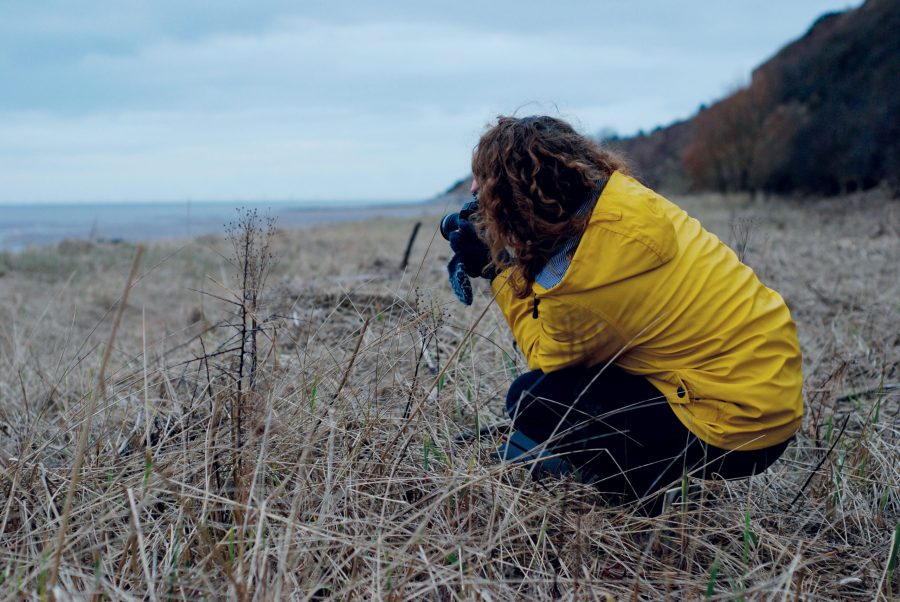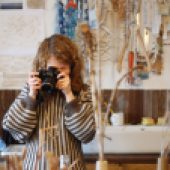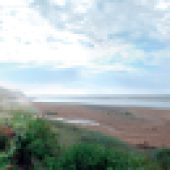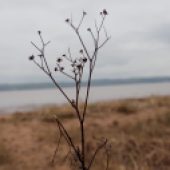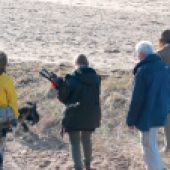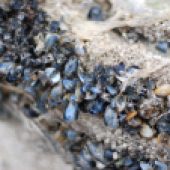Learn how to see the beauty in everyday things – and take better pictures of the seashore – through a photography course on the Wirral Peninsula. Words: Alex Reece
The digital revolution has made photographers of us all. I’m no professional, but not a day goes by without my taking a picture of some kind (usually on my smartphone). This is something that would have been unthinkable a decade ago, when my old-school camera was only ever dusted down for holidays and social events, and the pictures developed months afterwards.
But despite the accessibility of digital photography – and the clever auto mode on my camera, making blurred and poorly lit shots a thing of the past – I’m not sure I’m taking better pictures in terms of artistic merit. So when the chance came to learn about photographing finer details, something I occasionally have to do in my work as a journalist, I jumped at it.
There are plenty of courses around the coast on landscape photography (as previously covered in these pages). But focussing on the beauty of small things is an entirely different discipline, for which you must slow down and retrain the eye to notice what is often overlooked. It also involves knowing your way around a camera, which is where Laura and Kris Heath of Shore Cottage Studio come in, with their courses in both the technical and creative aspects of depicting nature. And their beachfront workplace on the Wirral Peninsula, built only last year, provides abundant inspiration for some incredible images.
DAY ONE
9.30AM A HIDDEN GEM
As Laura greets me at the door of Shore Cottage Studio – a custom-built, creative space with giant picture windows facing the Dee Estuary – it’s hard to tear my eyes off the view: miles of level sand, dotted with shipwrecks and oystercatchers, stretch out towards a cloud-topped silhouette of North Wales. Forensic scientist-turned-artist Laura and husband Kris, a Fine Art graduate, offer our small group of entry-level photographers hot drinks and homemade flapjacks, and the chance to drink in our surroundings, before announcing the plan of action: ‘Today we’re going to learn the rules, and tomorrow we’re going to break them.’
10AM THE SCIENCE BIT
To kick off, there’s a presentation by Laura on the technical side of photography. We learn how increasing the aperture of the lens allows us to take images with a narrow depth of field and a blurred background – ideal when highlighting details. Then we get to know our digital SLRs a bit better (in my case a, thankfully, weatherproof Olympus OM-D E-M1 I’ve borrowed) and try out different ways of capturing the flotsam and jetsam gathered in the studio. Laura shows me how to achieve a pleasingly artistic effect by slowing the shutter speed right down and jiggling the camera.
12.30PM SOUP AND A WALK
After a lunch of homemade tomato and pepper soup, we head to the beach, to take pictures of the natural interest down by the tideline. Kris urges us to focus on the texture, shine or shape of what we’re photographing, and to move ourselves around the subject, too. My first few close-ups of pebbles make for some pretty boring pictures, until Laura encourages me to change perspective. A skeletal seedhead, which gets lost in the grassland at the foot of the cliff, stands out when shot from beneath, with only the sky, sea and the charcoal outline of Wales as a backdrop.
2.30PM SEE WHAT YOU DID
The tide’s coming in so we head inside for tea and cake, and to look at our work on a big screen. Laura, an experienced lecturer, boosts our confidence by showing how even our less successful images can be made impactful by cropping or zooming in to improve the composition. It’s also fascinating to see what other people noticed – Ray Evans, a retired engineer from nearby Heswall, managed to spot some mermaid’s purses. Laura promises that tomorrow we’re going to focus on the creative application of what we’ve learned today.
DAY TWO
9.45AM COMPOSE YOURSELF
In contrast to yesterday’s overcast palette, today is wraparound blue skies, and as we gather on the studio sofas for coffee, we can make out the verdant colours of the Welsh coastline. Laura gives another short presentation, this time on the basics of composition, such as the ‘rule of thirds’, which stops you plonking the subject in the middle of the picture (as I am inclined to do). She also suggests making the eye work harder – perhaps by showing part of an object rather than the whole thing – to make a more interesting image.
10.45AM LINES OF BEAUTY
Before heading out into the wilds, we are asked to take pictures that play with lines and reflection, and to adjust the white balance, which can alter the colour cast or mood of a photograph. On a walk up the cliff to Wirral Country Park, and back along a former rural railway line, there is plenty of opportunity to do just that. I snap away at ripples in the sand, shimmers in puddles and fiddle with the white balance to add an otherworldly blue tone to some lichen.
1PM BLOWN AWAY
Over a warming vegetable soup served by Laura’s mother, Sue Barnes (a textile artist and fellow tutor at the studio), there’s a definite sense that we’re taking more intriguing pictures today. ‘I’ve had my camera for years, and I didn’t know what all the settings can do,’ says Wendy Collins, a commissioner from St Helens, who enjoys photographing buildings in Liverpool as a hobby. ‘I’ve certainly learned things I’ll take away with me.’ And looking at my classmates’ work after lunch, I’m inspired by their unusual take on ordinary things – from plump berries in hedgerows to textural, concentric rings in fence posts. I think I’m getting it now.
2.30PM A NEW VIEW
Picking up my camera again, I notice how I’m seeing things differently. I bump up the blueness of some nautical rope by adjusting the white balance, and I bob down low to catch the glint of the sinking sun in a bowl of rainwater. I also take a few frames of shadows and peeling paint – things I would not even have clocked before, while I was taking a big picture of the sea view.
4PM SOMETHING THERE TO REMIND ME
After more tea and cake, I edit my photos with Kris, selecting my seedhead from day one as my favourite to be framed, and making a mini-portfolio of another four. Seeing these, I feel a teeny bit moved, perhaps because the images capture a moment when I began to look at things in a new way. And this is the main point of the course, says Laura: ‘The bit I’m proudest of is changing the way people see things. I want them to notice those small moments every day and see the beauty in any environment.’ Taking this on board, we say our goodbyes, thanking Laura and Kris for sharing this place and their outlook on the world.
Shore Cottage Studio, Station Road, Thurstaston, Wirral, Merseyside, CH61 0HN (0151 648 6581, shorecottagestudio.com). Two-day courses run throughout the year in Photography, Textiles, Laser Cutting and Fused Glass: £200 per person. For more on the Olympus OM-D E-M1, which launched in autumn 2013, see olympus.co.uk. Prices start at £1,299 for the body only and £1,499 for the M.Zuiko Digital 12-50mm 1:3.5-6.3 lens EZ kit.
NEED TO KNOW
HOW TO GET STARTED
According to Laura, the most important thing is to carry a camera with you and take pictures daily. If you want to progress to more technically proficient photography, then invest in a digital SLR camera with manual modes and detachable lenses.
GETTING THERE
The nearest stations to Shore Cottage Studio are West Kirby (via Liverpool) and Heswall (via Chester). See nationalrail.co.uk. Thurstaston is five miles from Junction 3 of the M53, and around 30 minutes’ drive from Liverpool and Chester.
WHERE TO STAY
Peel Hey, Frankby, Wirral (0151 677 9077), is an award-winning boutique B&B, a ten-minute drive or taxi ride from Thurstaston. Owners Sue and Ken Graves converted the Victorian farmhouse and market garden into contemporary-style guest accommodation and serve locally sourced breakfasts, afternoon teas and traditional home-cooked suppers. Double B&B starts from £75-£95.
ASK THE PROS
Laura Heath, tutor at Shore Cottage Studio, describes how teaching art photography became her second career.
‘I had formal training in taking crime-scene photographs and images in the lab. So, having spent years doing that, I’ve loved every minute of telling people how to make something look less like it does in real life, and to capture the thing that perhaps other people don’t see. The coast is a rich seam of ideas for this type of photography. On that much smaller scale, the texture, the detail changes minute by minute with the weather and the tides. It’s inspirational every day.’

